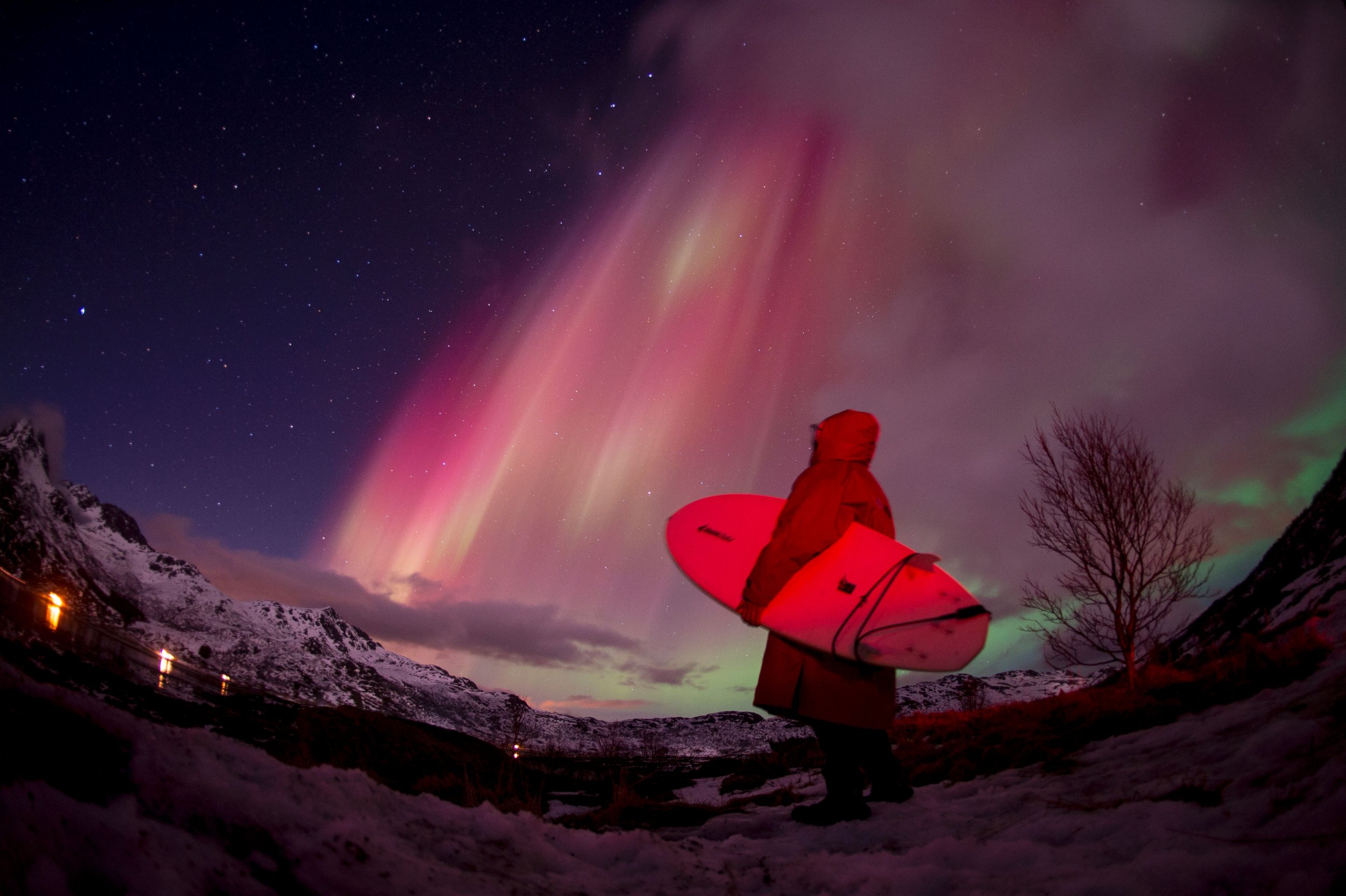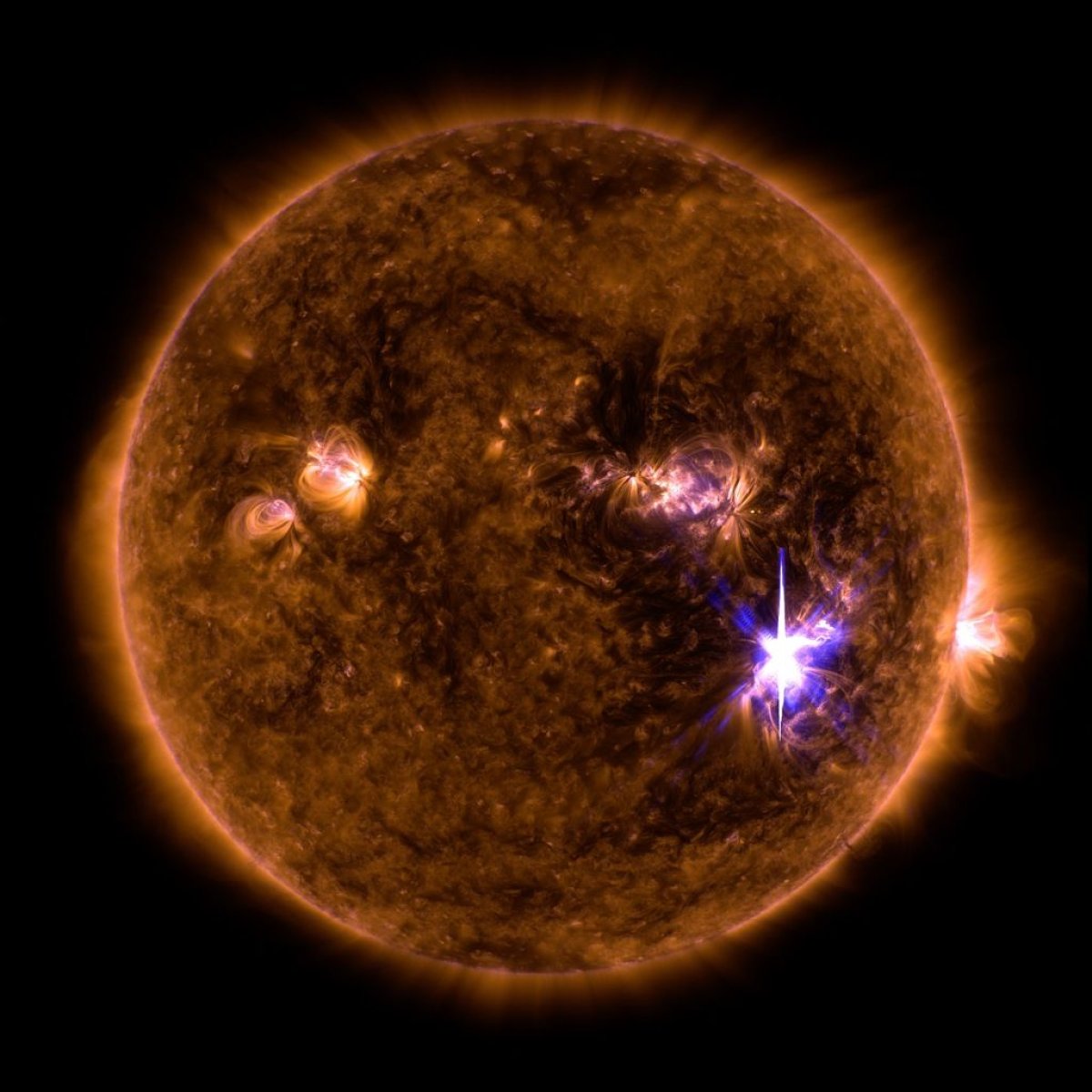
Auroras are usually pretty rare, especially once you travel away from the poles—that's part of what makes them so magical. But in 1770, something very weird happened: People across East Asia spotted faint red aurora in mid-September for a few nights running.
Scientists tracked down more than 100 observations from that month and realized that the unusual aurora event have been the single strongest solar flare in recorded history, according to a new paper being published in The Astrophysical Journal Letters.
"A strong solar flare was not a disaster in the past," lead author Hisashi Hayakawa, a historical researcher at the Graduate School of Letters in Osaka, Japan, who has been focusing on records of solar activity, wrote in an email to Newsweek. "Now it can be very hazardous because we have developed vulnerable infrastructure to the space weather."
Auroras are caused by the sun belching a giant mass of charged particles called plasma out toward Earth. As the particles enter Earth's atmosphere, they pass off their energy to air molecules in a burst of colorful light. From the ground, it looks like the sky is being painted by bright strikes of light. Along the way, auroras can take out GPS and communications satellites and cause power outages on Earth.
The phenomenon is most common in a ring around each pole, in the northern hemisphere at about 60 degrees of latitude, in the neighborhood of Alaska, Canada and Scandinavia. But when the sun is having a particularly violent tantrum, auroras can creep farther south.
In September 1770, that meant as far south as Japan, Korea and parts of China—below the 40- degree-latitude line—so the team tracked down more than 100 written observations of the phenomenon. It had been cloudy in Korea, so they struck out there, but they gathered 22 accounts from China and 88 from Japan spanning a total of nine days.
Read more: An aurora may cross northern U.S. Wednesday—here's how to watch
For the most part, such accounts aren't what we'd consider scientific observations; they're everyday people noticing something weird and writing it down in their diaries, or within chronicles of life at the time. "Since the premodern observer did not know the nature of the phenomena, auroras were recorded in various ambiguous way, such as 'faint red light in the sky,'" Hayakawa wrote. "One cannot be sure if it is really an aurora record or not only from single record."
That's why the team also tracked down a series of drawings of sunspots, dark solar acne, made over almost 50 years in Germany. Solar activity tends to rise and fall over a cycle about 11 years long as sunspots—which are basically giant cold patches where the sun's magnetic field has knotted up. Because the plasma that causes aurora is emitted from those sunspots, they can serve as a good clue as to whether or not a description really represents an aurora.

Finally, the scientists compared the 1770 event to what space weather enthusiasts call the Carrington event, a gigantic solar flare that occurred in 1859. If a storm of that size occurred today, it could cause as much as $2 trillion in damage; the 1770 event was of about the same magnitude but lasted much longer. Overall, Hayakawa said, that suggests these huge solar storms may have been more common than we thought.
Since teaming up to work on historical analysis of solar activity, Hayakawa and his colleagues have published a dozen papers on the topic—and they're looking to continue that research. Hayakawa said historical documents were sometimes tricky to track down, since their owners didn't necessarily know they existed, and said, "If you find an old diary in your attic mentioning strange faint light in the night sky or some black spots in the sun (important: with the information of date and location!), please let us know!"
Uncommon Knowledge
Newsweek is committed to challenging conventional wisdom and finding connections in the search for common ground.
Newsweek is committed to challenging conventional wisdom and finding connections in the search for common ground.
About the writer
Meghan Bartels is a science journalist based in New York City who covers the science happening on the surface of ... Read more
To read how Newsweek uses AI as a newsroom tool, Click here.








